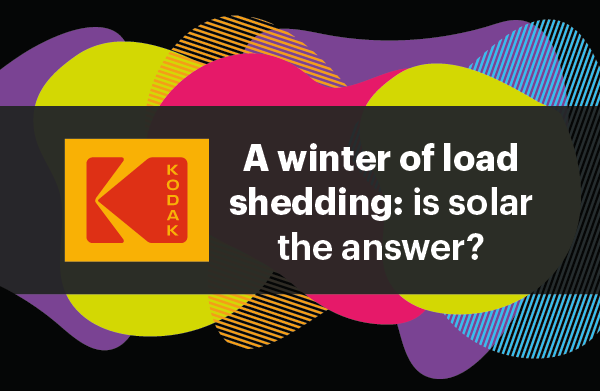With winter fast approaching, people across South Africa are presented with an all too familiar feeling of apprehension around electricity. Load shedding is far from over, and whilst a lack of power is manageable in the summer months, darker days and colder nights mean that being unable to access a consistent electricity supply becomes a real problem.
But is Eskom doing anything to ease the burden this year? As another winter rolls around, the ageing power stations have seen yet another annual cycle — meaning they are even less able to cope with the ever-increasing power demands of South Africa’s growing economy.
So, is there a light at the end of the tunnel? Could there be a long-term solution to the persistent power shortages?
An uncertain future
On 8 March, Eskom stated that generator unreliability would result in several hours of Stage 2 load shedding. Across the board, the crux of the issue is the unreliability of decrepit infrastructure that is constantly being taken offline for repairs and maintenance. Although many power outages are implemented as a preventative measure to avoid higher stages of load shedding, Eskom is still asking South Africans to reduce their electricity usage and switch off non-essential items.
In frustrating news, an additional 61 days of load shedding has been predicted throughout the winter months between 1 April and 31 August 2022, reaching up to Stage 2 depending on any unforeseen unavailability of power stations during this time.
An aggravator of the situation is the refurbishment of two units at the Koeberg Nuclear Power Station that are going offline for a total of five months. Six new steam generators will be installed in the two 970 MW units, temporarily putting the power station at 50% operation with no new Eskom generation coming online.
Fortunately, authorities are beginning to realise that routinely updating antiquated infrastructure that will continue to fail is not the solution to the growing electricity crisis. Alternative energy forms need to be considered as a viable way out of these ongoing power shortages.
Mobilising for change
In 2021, Eskom announced it would be undertaking a pilot project at the Komati Power Station in Mpumalanga. This project would see the closure of the last coal-fired unit and the installation of a solar farm in its place.
This proposed new solar plant will join several solar projects across South Africa, including the Jasper Solar Energy Project in the Northern Cape. This 96MW renewable energy farm provides 180 GWh of clean, sustainable energy to over 80,000 households. What’s more, the energy produced offsets over 145,981 tonnes of carbon dioxide every year. Another plant located in the Nothern Cape is the De Aar Solar Power project: a 175 MW installation that powers more than 19,000 homes in South Africa with nearly 170,000 solar PV panels!
Whilst South Africa has a long way to go to realise its energy goals, it is clear to see that steps are being taken to transition to cleaner power alternatives. In fact, the city of Cape Town recently launched a tender process to procure up to 300 MW of renewable energy capacity in the hope to become with country’s first load-shedding free city. Solar PV technology will be at the heart of this initiative and will involve the procurement of independent power producer projects with capacities between 5 MW and 20 MW.
Energy you can count on
Solar power is undoubtedly South Africa’s ticket out of the energy crisis. However, large-scale projects require significant funding and will take years to come into effect.
Individuals — whether you are a homeowner or a business owner — have the power to begin their transition to renewable energy today. When you invest in a PV system for your home or business, you reduce any strain on the grid and free up power, helping to avoid the necessity for load shedding.
KODAK Solar Products are the perfect renewable solution that provide energy you can count on. The product portfolio comprises high-quality, affordable inverters and batteries that enable you to generate and store clean energy.
It is easier than you think to switch to solar. Find an installer local to you to begin your journey today.




